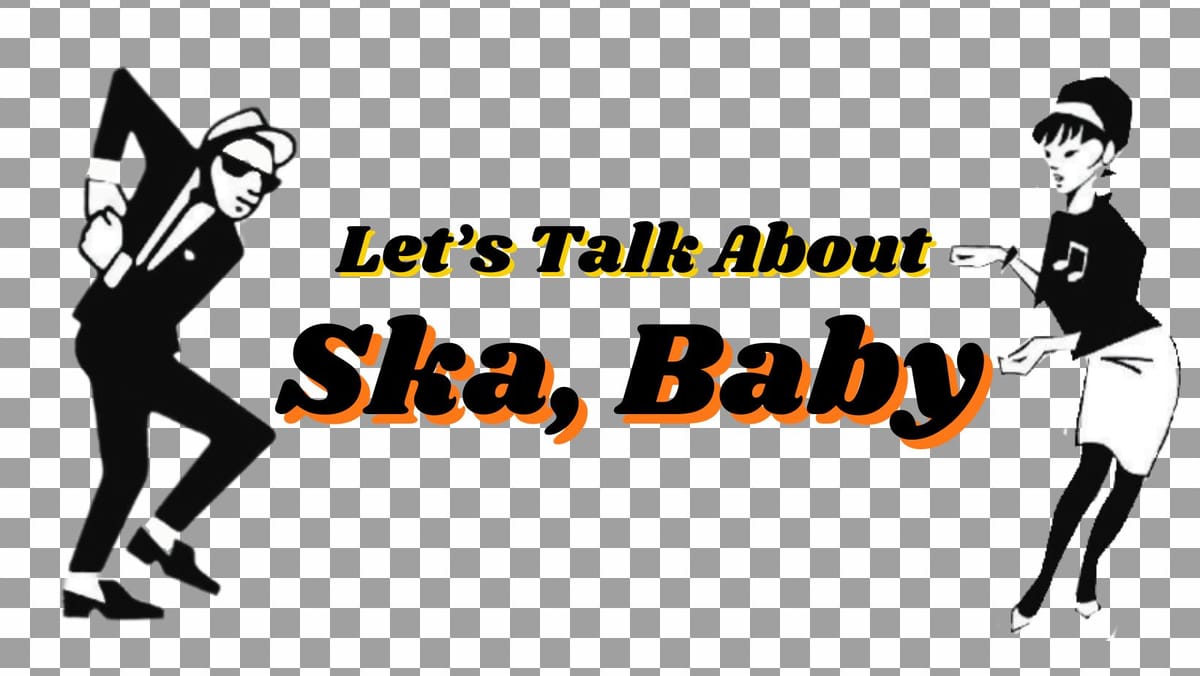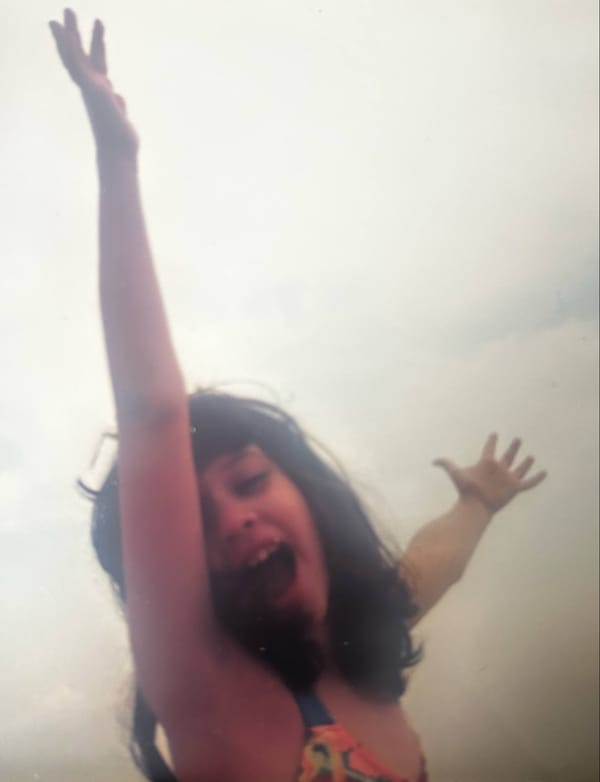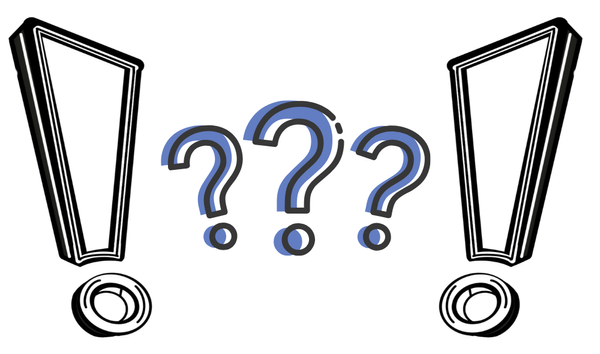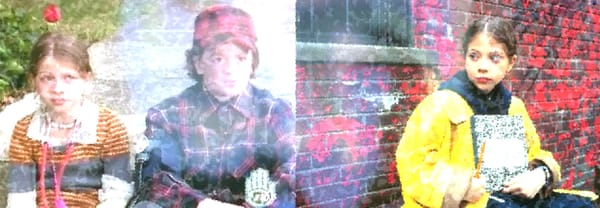Let's Talk About Ska, Baby
Looking back fondly on ska music and its optimism.

Musings of an Anxious Millennial Writer #12: Pick it up! Pick it up! Pick it up!
'll never forget the moment when my friend Amy changed my life. We were 16 and sitting in the cafeteria for lunch. For some reason, my all-girls Catholic high school decided that junior year would be the year they put us to the test. After a sophomore year of battling off the mean girls who decided to target my little friend group of weirdos every day at lunch, throwing food at us and calling us nasty names, junior year meant we had to fend for ourselves. Our class was split in half between two lunch periods. If you were lucky, you and all your friends had the same lunch period. If not, you had to get real good, real fast at making new friends.
Fortunately, my best friend Liz had the same lunch period as me. And her much more outgoing nature introduced me to a few more folks we could assemble for our table. Amy was one such person.
“Did you like the Flamingos?” She asked me. “They do a great cover of ‘Freeze Up.’ You know OpIvy, right?”
No, I didn’t. I was so new to these worlds of punk and ska that I barely knew much beyond Green Day and No Doubt.
“Wait, you don’t know OpIvy?? I’ll make you a CD.”
When I started writing this, I was tempering my excitement about going to see Save Ferris in concert. This also meant that I got to listen to Save Ferris non-stop. Not that I couldn’t do that at any time, but it’s always nice to have an occasion. I feel like I always need a reason to listen to ska, which means that I consistently come up with occasions specifically to listen to ska. Summer is one such occasion. Nothing accompanies a warm, sunny day better than busting the shades and letting the sun in, box in my hand, music by my side, skankin’ to the rhythm of “My Town” by Buck-O-Nine.
Summer and ska may go hand-in-hand, but that's not to say I don't listen to it at other times. That’s what Skanksgiving’s all about. It’s just that feel-good nature of summertime that goes so well with ska. It's good times music—so why do people treat it so badly?
There's a meme I’ve seen floating around the World Wide Web that likens ska to being 13 and taking the first bite of a mozzarella stick. And I can't think of a better description of a feeling. Ska music is neon. It's bowling alley floors. It’s dino nuggets and arcades. It’s staying up late to watch edgy cartoons. It's clever puns. It's high school proms you’ll never be invited to, but it's OK because you didn't want to go anyway. It's the best of your worst years, but with horns.
When I started attending local punk shows in high school (more on that at a later time), it was the first time I felt like I could belong somewhere. I may not have worn as much plaid, rocked as many studs, or sported bright, manic-panicked hair—but I didn't feel like an outsider looking in. I wanted to be a part of their world, and that fantasy didn’t seem so far out of reach.
After ingratiating myself with more bands on the scene and getting a few shows under my belt, I was ready to broaden my music horizons. From then, Amy became my ska sherpa, guiding me in all things two-toned, making me mixed CDs (what a lost art), and keeping me informed of local shows.
But it was that introduction to Operation Ivy that really put things into perspective for me.
I started thinking beyond the scope of typical high school problems. Sure, jocks, cheerleaders, and bullies will always be universal teenage problems, but there are larger issues that the bullies are often symptomatic of. OpIvy made me more aware of this. I allowed them to challenge the views ingrained in me from my upbringing, even if they were political statements from nearly 20 years earlier. Because of Operation Ivy, I felt like I finally understood punk.
But it didn't mean I still didn't enjoy the more fun side of ska.
Ska is often treated more like a joke than a viable music genre. Sure, there are valid arguments to be made about cultural appropriation in third-wave ska. And yes, skanking as a form of dance can be pretty funny to watch. But to reduce it to its bare bones is to ignore some of the best aspects of ska—like how it creates an inclusive space for weirdos and outcasts to be themselves, have fun, and dance.
Ska made me realize I could be a part of something bigger than myself. I could blend in with the punk kids who once seemed so far out of my league. I could care about real-world issues. I could be unabashedly myself. I could have all that AND still not be cool. In fact, cool often felt like the enemy of ska, which, in turn, made ska incredibly cool. At least it did to me as a sixteen-year-old.
But how does it hold up in adulthood? Do I only enjoy it because of nostalgia, or do I think it’s still a music genre worth listening to and introducing others to?
Of course I do. Of course it holds up. As long as you’re open to letting a little joy into your heart, you’ll always have room for ska. And to the people who think it’s cool to hate ska, I say this: have you so little happiness in your life that you can’t find any joie-de-verve in a loud horn section?
If there’s one big takeaway you should get from ska, it’s that you should always go back to your roots. Not just by paying respect to the moments and music that made you who you are today but also by going back to the roots of ska. Enjoy your Reel Big Fishes and Mighty Mighty Bosstones, sure, but also pay respect to the folks who made it all happen. Listen to The Skatalites. Don’t just namedrop Desmond Dekker; pay attention to his music. And, of course, listen to as much of The Specials as humanly possible.
And in case you’re wondering, the Save Ferris concert ruled. I had just as much fun at 35 as I would have as a teenager, except I worry even less about looking cool now.



